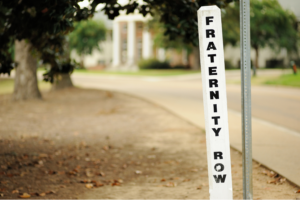There have been stories circulating about record highs in college application numbers. Harvard received 42% more applications this year than last year and has pushed the release of admissions decisions to April 6th. This is not limited to the Ivy League; the UC system, home to UCLA and Berkeley, saw a 16% rise in the total number of applications over last year. NYU, meanwhile, topped 100,000 applications, a 20% jump since last year.
Why is this happening? What does this spike in application numbers mean for your applications, and your chances of admissions? In this article, we’ll explore why admissions numbers have gone up so high, and what it could mean for your own college applications.
Why The Spike?
The answer here, as it has been so often this past year, can at least partially be laid at the feet of the Coronavirus pandemic. As we discussed in an article last summer, many students saw how the pandemic was affecting colleges, and decided to put off their college plans. Instead of starting in the fall of 2020, they would wait until 2021, in an attempt to have a more normal college experience. While a majority of students did not do this, a record number of students who applied to top institutions sought deferred admissions.
This fall, therefore, many of the students who would have been attending colleges but waited a year instead had to reapply. This includes not just the students who requested and received deferment, but students who decided it was in their best interest to wait before beginning college, due to financial or safety concerns.
The new growth of test-optional schools, especially in the Ivy League and other elite institutions, has also been a driver for admissions growth. Many students who previously would not consider applying to a school due to their low test scores may now believe they have a better chance of being accepted if their applications are judged without them. This may or may not be an accurate assessment (and we believe it isn’t), but the hope of attending an elite school is a powerful motivator.
Finally, it is important to note that not all schools saw record applications. While many elite institutions did see a remarkable rise in the number of applicants over previous years, many smaller or less well-known schools saw a contraction in their applicant pool. As families worry about finances, and whether they can pay for college at all, many lower-income students are putting off applying to colleges.
Thus, depending on what school you applied to, you’ll be facing either much more or somewhat less competition than you would in previous years. If you applied to a top-tier school, then your chances may be slimmer. If however, you had a good selection of safety schools, you have a better chance of getting in somewhere for college, as is true generally.
How Will This Impact Your Application?
This depends, more than anything, on when your application was submitted. While most top colleges do admit a significant percentage of their class through their early rounds of decisions, those numbers were even higher this year. This is due to uncertainty on the part of many colleges, who didn’t know if there would be a similar dip in students wanting to attend that we saw last year.
Fearing a drop in admissions numbers, many schools which offer binding Early Decision admitted around half their class in the early round of applications. As news of the vaccine and hopes for an end to the pandemic then drove application numbers even higher, schools are left with far more regular decision applicants, and far fewer spaces to divy among them.
How this will affect you in particular depends on when you applied. If you managed to get one or more of your applications in early, you have likely already heard back, for good or ill. If you are in the regular decision pool however, then your chances are looking increasingly slim this year.
We’ve discussed how colleges review applications, and the sad truth that far more qualified students apply to top schools than there are spaces for them. This is likely to be exacerbated this year. A great many highly qualified students will be rejected from schools that simply don’t have space for all the students who applied. While some of the students who have applied are unqualified, this happens every year, and the bulk of applicants do not fall into this pool.
While this may seem like a grim outlook, do not despair, as there are options available, even if you don’t manage to secure a place in your top school. Top colleges reject hundreds of thousands of students every year, and almost all go on to have enjoyable college experiences and fulfilling careers in spite of this temporary setback.
Exploring Your Options
First, we’re going to recommend patience. Many of the admissions departments at top schools are drowning in a sea of applications, so admissions decisions may be delayed. Indeed, the Ivy League has pushed announcements back to April 6th. If you are accepted by one or more of your safety schools, occupy your time deciding between them, and dealing with their financial aid and sundries.
If you get waitlisted by your top school, we recommend you check our handy guide here so you can explore your options. The most important point of which is: decide which safety school you’re going to attend instead. Not getting into your top school doesn’t have to be the end of the world, and you can likely still realize your dreams at another institution.
If you didn’t apply to any safety schools, then your situation becomes a bit more tenuous. Here we recommend a gap year, where you take time to participate in other meaningful activities, while preparing to reapply to colleges. Alternatively, you can apply to less competitive community colleges, and then apply to your dream school as a transfer student; with some college credits and experience already under your belt.
While this will be a stressful time, always remember that you have options, and just because you didn’t get into the college of your dreams, doesn’t mean all your dreams for the future are dead.
Final Thoughts
While college applications are always stressful, this year has been particularly trying, with the pandemic and remote schooling adding new wrinkles to an already difficult process. We hope that with this article, you’ll have a better understanding of the layout of the field, and what challenges still remain in store. Understanding what you’re facing is key to overcoming it.
If you want more personalized advice about dealing with waitlisting, or transferring to your top choice school from a safety, feel free to schedule a free consultation. We strive to be experts at every part of the admissions process and welcome any students who want to better understand and prepare for their futures.








